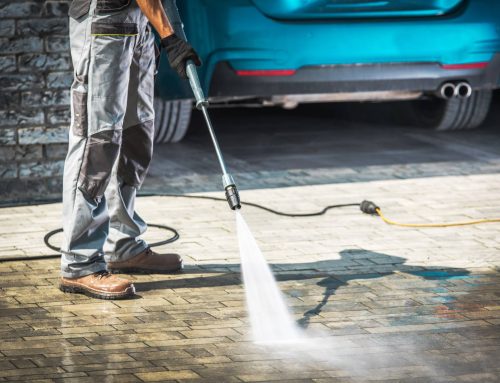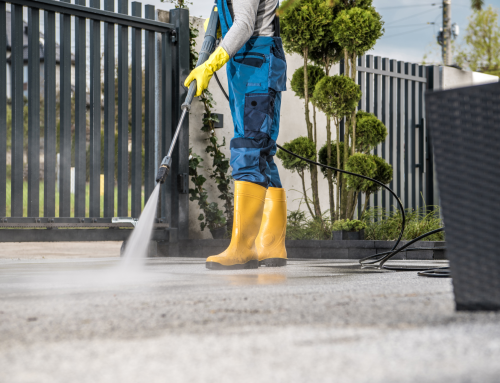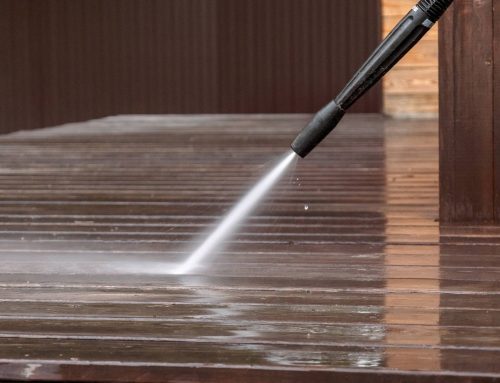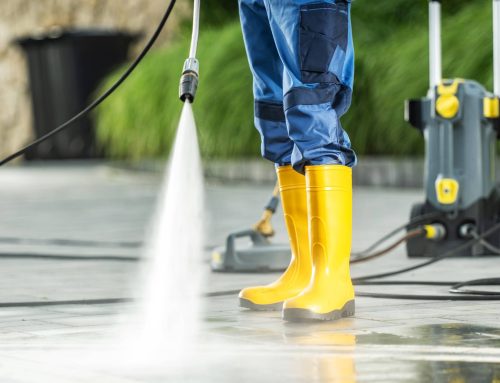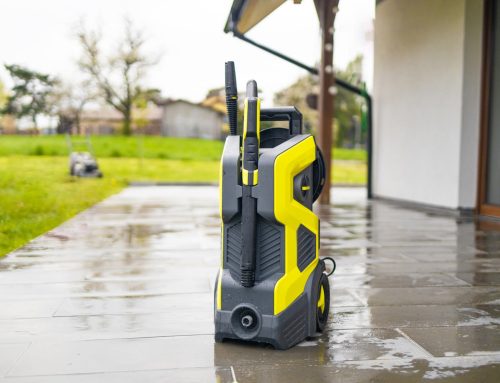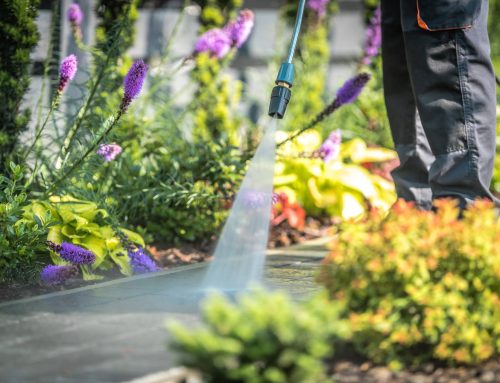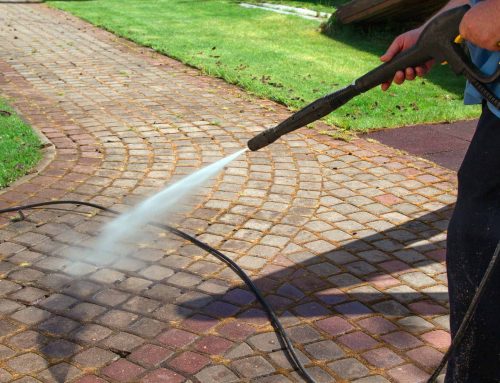Are you considering getting your home’s siding some power washing? It’s a common consideration for homeowners seeking to maintain their property’s exterior. Power washing, often dubbed the magic wand of cleaning, is a popular choice. But before you get into it, you might have wondered: Will a power wash damage your home’s siding? Let’s get some answers.
TL;DR: The answer is Yes, but it depends. Power washing can potentially damage your home’s siding if not done carefully. Factors like water pressure, nozzle type, and siding material play a significant role in the result. By understanding these factors and adjusting accordingly, you can prevent unwanted damage. Nevertheless, hiring a professional is the safest option to prevent costly damage.
Defining Power Washing and Unveiling Its Secrets
To comprehend how power washing can give your siding a nice cleaning or potentially damage it, we must first understand how it works.
Definition and Process: The Science Behind High-Pressure Cleaning
To put it plainly, power washing is a technique that rejuvenates the outer surfaces of buildings, including your home, by employing a concentrated, high-pressure jet of water. Think of it as a spa day for your house, with a vigorous water massage.
Here’s how it works: The power washer pressurizes water and delivers it through a hose to a handheld wand. The wand is equipped with different nozzles that control the spray pattern and intensity. When you pull the trigger, the machine pumps the water, and a powerful stream of water is released. This can effectively blast away stubborn stains and debris from your home’s siding. It’s akin to using a high-pressure hose to clean your car’s dirty exterior.
Exploring the Benefits of Power Washing Your Home
Effective Cleaning: Many homeowners choose power washing for its remarkable ability to clean surfaces thoroughly. It can remove deep-seated dirt, algae, moss, and stains that regular cleaning methods might struggle with.
Time Efficiency: It’s a time-saver. Power washing can cover large areas quickly, making it an efficient choice for homeowners with busy schedules.
Restoration: Power washing can give your home’s exterior a refreshed look and an almost like-new appearance. It’s like hitting the reset button on your siding’s cleanliness.
Preparation for Painting: Many homeowners opt for power washing as a crucial step before repainting their homes. Clean surfaces ensure better paint adhesion and a longer-lasting finish.
Understanding the Dangers of Power Washing Done Wrong
Regarding power washing, it’s important to recognize that it’s not without its challenges. There are genuine concerns and potential risks that homeowners should be well-informed about.
The most significant risk factor is the intense water pressure employed in power washing. Imagine it like a firefighter’s high-pressure hose directed at your home. This force can lead to various types of damage to your siding, including:
Cracks: The intense pressure can create hairline cracks in siding material, especially on more fragile surfaces like stucco or wood.
Loosened Siding: Power washing can dislodge siding panels, making them vulnerable to further damage or even detachment.
Chipped Paint: The powerful stream of water can chip or peel paint, leaving your siding exposed to the elements.
Water Intrusion: If water gets behind the siding, it can lead to mould, mildew, or even structural damage over time.
Understanding the Factors That Can Make or Break Your Power Washing Experience
Now, let’s delve into the factors that can either minimize or magnify the damage caused by power washing:
-
Water Pressure:
The most critical factor is water pressure. Higher pressure can cause more damage, while lower pressure is gentler on your siding. It’s like choosing between a sledgehammer and a feather for a task.
-
Nozzle Type:
The type of nozzle on your power washer matters. A wide-angle nozzle disperses the water’s force over a broader area, reducing the risk of damage.
-
Angle of Spraying:
Holding the nozzle at an angle, rather than directly perpendicular to the siding, can also reduce the risk of water intrusion and damage. It’s akin to angling a spotlight to cover a wider area instead of focusing it on one point.
-
Professional Expertise:
Perhaps the most crucial factor is the person holding the power washer. A professional power washer understands these variables and knows how to adjust them for your specific siding type. They have the right equipment and expertise to ensure a safe and effective cleaning process.
-
The Right Equipment:
Professionals use equipment with adjustable pressure settings and various nozzle options, allowing them to tailor the cleaning process to your siding’s needs.
-
Knowledge:
Professionals are trained to recognize the vulnerabilities of different siding materials. They know when to use lower pressure and when higher pressure is acceptable.
-
Experience:
Experience matters. Professionals have cleaned countless homes and have encountered a wide range of siding conditions. This experience allows them to make informed decisions to minimize the risk of damage.
Your Comprehensive Guide to Safely Power Washing Your Siding
With a good grasp of the advantages and potential drawbacks, let’s dive headfirst into the intricacies of power washing. Below, you’ll discover essential tips and a detailed, step-by-step guide to ensure your power washing endeavours are both safe and productive, with no harm to your siding in sight.
Tips and Best Practices:
Read the Manual:
Start by reading the manufacturer’s instructions for your power washer. Each machine can vary, and understanding your specific equipment is crucial.
Choose the Right Day:
Pick a day with mild weather. Avoid extreme heat or cold, as these conditions can affect the cleaning process and potentially harm your siding.
Inspect Your Siding:
Before starting, thoroughly inspect your siding for any loose panels, cracks, or areas that might need extra care during the cleaning process.
Gear Up for Safety:
Always prioritize your safety by donning the right protective gear. Equip yourself with safety goggles, gloves, and suitable footwear. Remember, high-pressure water can pose risks to your skin and eyes.
Prep the Playing Field:
Before you begin, take a few moments to clear the area around your siding. Remove any obstacles or objects that might get in the way or become unintended targets of the high-pressure water. Delicate plants or shrubs nearby? Shield them with plastic sheets to prevent overspray.
Step-by-Step Instructions:
-
Prepare Your Power Washer:
Fill the reservoir with an appropriate cleaning solution. You can use a mild detergent specifically designed for power washing. Make sure you have the correct nozzle attached to the wand.
-
Test the Pressure:
Before aiming at your siding, test the pressure on an inconspicuous area or a scrap piece of siding if available. Adjust the pressure as needed to avoid damage.
-
Maintain Distance:
Hold the power washer wand at a distance of at least two feet from the siding. This distance prevents excessive pressure from causing damage.
-
Angle the Nozzle:
Aim the nozzle at a slight downward angle rather than directly at the siding. This helps prevent water from getting behind the panels.
-
Work in Sections:
Divide your siding into manageable sections and work from the top down. This ensures that you clean thoroughly without missing spots.
-
Even Strokes:
Use even, overlapping strokes as you move the wand horizontally. Avoid lingering in one spot for too long to prevent damage.
-
Rinse Thoroughly:
After cleaning a section, switch to a clean water nozzle or lower the pressure to rinse off any detergent residue. Make sure no soap is left behind.
-
Inspect and Touch-Up:
After finishing, carefully inspect your siding for any missed spots or areas that may need extra attention. Touch up as needed.
Choosing the Best Cleaning Solutions for Your Siding Material
The choice of cleaning solution or detergent can vary depending on your siding material:
Vinyl: A mixture of water and mild dish soap is often sufficient for vinyl siding. Avoid harsh chemicals that can damage the vinyl surface.
Wood: Use a wood-specific cleaner or a mixture of water and mild detergent. Avoid abrasive solutions that can strip the wood’s finish.
Stucco: Stucco can be sensitive, so opt for a gentle stucco cleaner or a mild detergent mixed with water.
Brick: Brick siding can handle slightly more robust cleaning solutions, but still, opt for a mild detergent mixed with water to avoid any damage.
Why Enlisting the Power Washing Pros Is Your Safest Bet
While DIY projects can be tempting, hiring a professional power washing service offers several advantages:
Expertise: Professionals have the knowledge and experience to assess your siding and adjust pressure accordingly.
Equipment: They come equipped with specialized tools and equipment designed for various siding materials.
Risk Mitigation: Professionals reduce the risk of damage to your siding, preventing costly repairs.
Why Professional Power Washing Is a Wise Long-Term Investment
While DIY might seem cost-effective initially, hiring professionals can save you money in the long run. They prevent damage and the associated repair costs, preserving the integrity and appearance of your siding. It’s like investing in regular car maintenance to avoid expensive breakdowns down the road. Your home deserves the same care and attention to detail.
Conclusion: Wrapping Up the Power Washing Saga
Power washing can be a blessing or a curse for your home’s siding, depending on how it’s handled. Understanding your siding type, considering alternatives, and, if you opt for power washing, hiring a professional are all key factors in preserving your home’s exterior. Stay informed, stay cautious, and make the right choice for your home’s sake. Your siding will thank you, and your curb appeal will remain intact.


